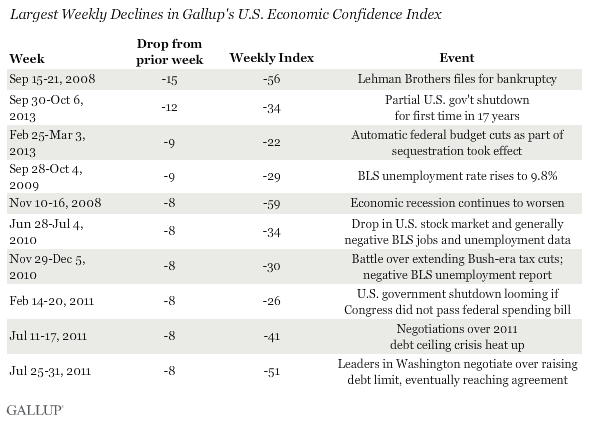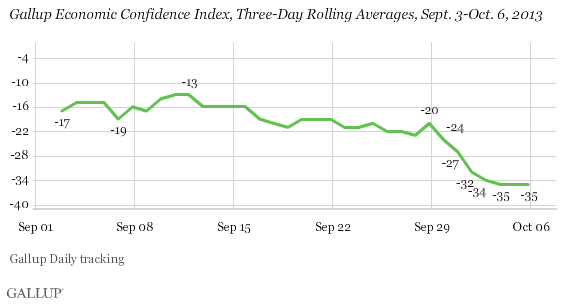Listening to the media, they would like you to think that this economic recovery is a beautiful thing. The rose colored glasses are on, and they’re not looking hard enough to see the reality of the situation… With a couple of exceptions.
I want to share this article from the Wall Street Journal. Not just because I’m in it, but because the sublime Simon Constable points out that the middle class is vanishing, and the categories that are propping up this current economy won’t do so forever.
I’ve said it before, and I’ll say it again. It’s Worse Than You Think!
For all of you tech-savvy and WSJ subscription-buying types, Here’s the link to the article.
For the rest of you po’ folk, here it is!
A Weak Economy Puts the U.S. Just a Couple of Hiccups From Recession
By SIMON CONSTABLE
Unless you are one of a very lucky few, there is little about the economic recovery that looks “robust.” We are likely just one or two hiccups away from another recession.
For all but high earners it’s increasingly tough to make ends meet. Just look at J.C. Penney as a prime indicator, says Kristin Bentz, consumer expert at Phoenix-based private-equity firm PMG Venture Group.
The chain that has traditionally served the once-vibrant middle class is struggling. Sales at the retailer slumped 14% in the first half of the year versus the same period a year ago as increasingly stretched consumers switched to less expensive stores.
Things are so bad that many families are doing even their grocery shopping at super-discount “dollar stores.”
“It’s because they can’t afford to go to Wal-Mart,” Ms. Bentz says.
The problem is that the recovery is so weak that the bulk of the population hasn’t benefited economically.
Consumer spending is increasingly dominated by high earners. The richest 20% of households account for 38% of spending, according to government data for 2011, the latest available.
Compare that with 2003 when the top earners spent 26% of the total. Consumer spending typically accounts for approximately two thirds of the economy.
Unless things change, this doesn’t augur well for an improvement any time soon, says a recent report from the Royal Bank of Scotland. Without earnings rising for lower-wage workers, “odds of a meaningful acceleration in economic growth will be limited,” the report says.
That’s the situation now. But it could get even worse with some economic hiccups.
“Economists who believe the U.S. economy is now firmly on the road to a sustainable recovery are utterly deluded,” writes financial author Harry Dent in his September H.S. Dent Forecast newsletter. He sees the possibility of a sharp decline starting in the first half of next year. The economy “gets worse, possibly dramatically worse, in the first three quarters of 2014.”
Housing
What strength there has been in the economy has been due to housing, says Bill Stone, chief investment strategist for PNC Wealth Management in Philadelphia. And housing has been supported by the historically low cost of borrowing, he says.
The question is: How will housing perform as mortgage rates rise? Probably not well.
Interest rates for 30-year, fixed-rate mortgages averaged 4.5% last week according to Freddie Mac, up from 3.45% in April. Put another way, the cost of financing a $200,000 mortgage has jumped 14% to $1,013 a month from $893. If rates head to a more normal 6.4%, the 2006 average, the mortgage payment climbs to more than $1,251.
More succinctly: Where’s the extra money going to come from? Wage growth is weak and job growth is slow. On top of that, new entrants into the housing market, typically young people, are disproportionately unemployed—13% of 20-24-year-olds are without work, the government says.
“Certainly it’s going to weigh on things,” says Mr. Stone. As borrowing costs surged, mortgage applications plunged, down 15% since April, according to the Mortgage Bankers Association.
Student Debt
Trying to get ahead through education may help individuals score a better job but it could have a hampering effect on the overall recovery, according to the Federal Reserve Bank of New York. In a recent paper it says: “While highly skilled young workers have traditionally provided a vital influx of new, affluent consumers to U.S. housing and auto markets, unprecedented student debt may dampen their influence in today’s marketplace.”
Or put another way: These educated yet indebted graduates likely won’t help boost consumer spending and could be weighed down further when borrowing costs rise.
A Harsh Winter
The Farmer’s Almanac recently predicted a “bitterly cold and snow-filled” winter in the northern U.S. Specifically, the Northeast will see “intense storm[s], heavy rain, snow, strong winds.” Most of the rest of the country will see “unseasonably cold” weather, the Almanac predicts, including freezing in Florida.
The nonprofit Weather Centre agrees. It forecasts a rough time early next year, saying “much of the nation can expect some frigid weather this winter.” So what? If it’s colder, people will spend more on their heating bills. That extra cost will come straight out of any cash consumers might use for other things like cars or furniture.
Get Defensive
If the economy deteriorates, investors need to get defensive. That means buying stocks of companies whose products people buy no matter what—like soap, shampoo and food, the so-called consumer staples. If you don’t want to pick individual stocks yourself then you could try looking at the Consumer Staples Select Sector SPDR (XLP) exchange-traded fund, which holds a basket of consumer-staples stocks.























